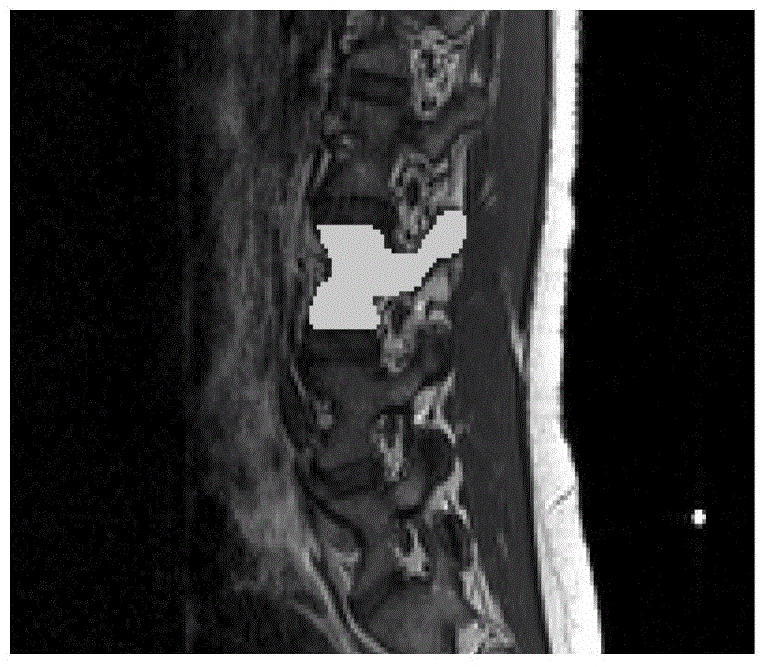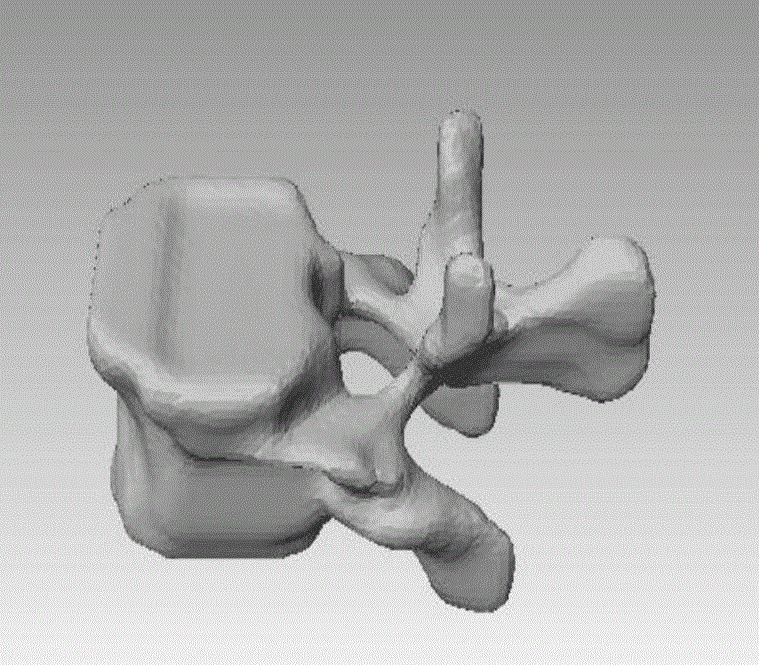Harris-based spine feature point automatic recognizing method
An automatic identification and feature point technology, applied in the field of medical image processing, can solve the problems of low efficiency and high requirements, and achieve the effect of simplifying the operation process and reducing the number of grids
- Summary
- Abstract
- Description
- Claims
- Application Information
AI Technical Summary
Problems solved by technology
Method used
Image
Examples
Embodiment Construction
[0086] see figure 1 , figure 1 The process and results of feature point recognition on the human lumbar spine L3 by applying the method of the present invention are shown respectively. The model was verified in the paper (Wang Y, Yu B, Dai J. Three-Dimensional Finite Element Force Analysis and Simulation of Human Spinal Lumbar Segment[J]. Journal of Convergence Information Technology, 2013, 8(4).).
[0087] Step 1, performing three-dimensional reconstruction on the CT image of the human spine to obtain a three-dimensional model of the spine, and cutting the three-dimensional model to obtain the vertebral body for which feature points are to be extracted;
[0088] like figure 2 As shown, after enhancing the CT data and extracting the threshold value, the range of the target vertebral body is segmented, and the following is obtained: image 3 The 3D model shown. The specific construction and segmentation process can be carried out through the ScanIP module of the simplewa...
PUM
 Login to View More
Login to View More Abstract
Description
Claims
Application Information
 Login to View More
Login to View More - R&D
- Intellectual Property
- Life Sciences
- Materials
- Tech Scout
- Unparalleled Data Quality
- Higher Quality Content
- 60% Fewer Hallucinations
Browse by: Latest US Patents, China's latest patents, Technical Efficacy Thesaurus, Application Domain, Technology Topic, Popular Technical Reports.
© 2025 PatSnap. All rights reserved.Legal|Privacy policy|Modern Slavery Act Transparency Statement|Sitemap|About US| Contact US: help@patsnap.com



